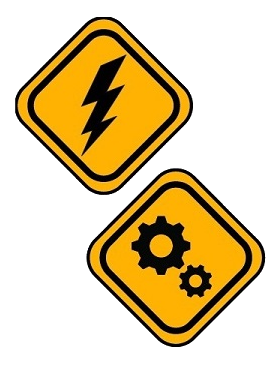The benefits of an electrical infrared inspection are obvious but to receive a complete and effective inspection some planning is involved. The inspection identifies thermal conditions at the moment of inspection. Not only does the inspection need to be scheduled on a day when the building load is at it’s greatest but the object to be inspected should be under its highest load. The infrared camera will identify and record the heat generated at the very moment of inspection. Its for this reason that scheduling the inspection and mapping out the inspection route is so important. Understand that most buildings have very different loading characteristics. Generally there’s are two conditions that create peak demand .
First is climate control. Every building has two systems to control climate,the heating system and the cooling system . Never are these two systems fully loaded at the same time. This is why a yearly electrical infrared inspection is divided into two sub-inspections , winter and summer.
Second would be based on what the buildings tenants power demands are . A factory may have high levels of production at different times of the year. A water treatment plant may demand more power in the rainy season. A hospital may draw more load a few months of the year than others.
The combination of these two load conditions usually create two peaks of load demand and that’s why two sub-inspection per year are recommended. If a peak demand occurs between the winter and summer than a third sub-inspection may be needed to get a complete report of build load conditions.
When planning and scheduling your electrical infrared inspection it’s best to start by contacting your power company and getting the prior years usage data. They should be able to provide past usage charts or graphs used for billing. These will show the peak demand months when your infrared inspection will be the most effective.Once the months of inspection are selected the next thing will be to make an equipment inspection list. This can be completed in a spreadsheet which makes it easier to add and remove equipment,also change the order of equipment listed.
When your equipment list is complete, start planning the inspection route. Identify the equipment that has an intermittent high load demand. For example, your planning the summer inspection and the building has roof top AC units . Those AC units will be at their highest load demand between 12:00 and 1:00 . Your inspection route should allow for intermittent loads to be inspected during their highest demand. Access to equipment is also important. If a floor ,room,or wing of a building will be off limits for part of the day ,then your route should work around those times. The inspection route should track smartly threw the building . Inspection cost is in part determined as a daily rate . The more equipment inspected per day can greatly reduce the inspection cost.
Proper Planning is the key to a successful electrical infrared Inspection.
